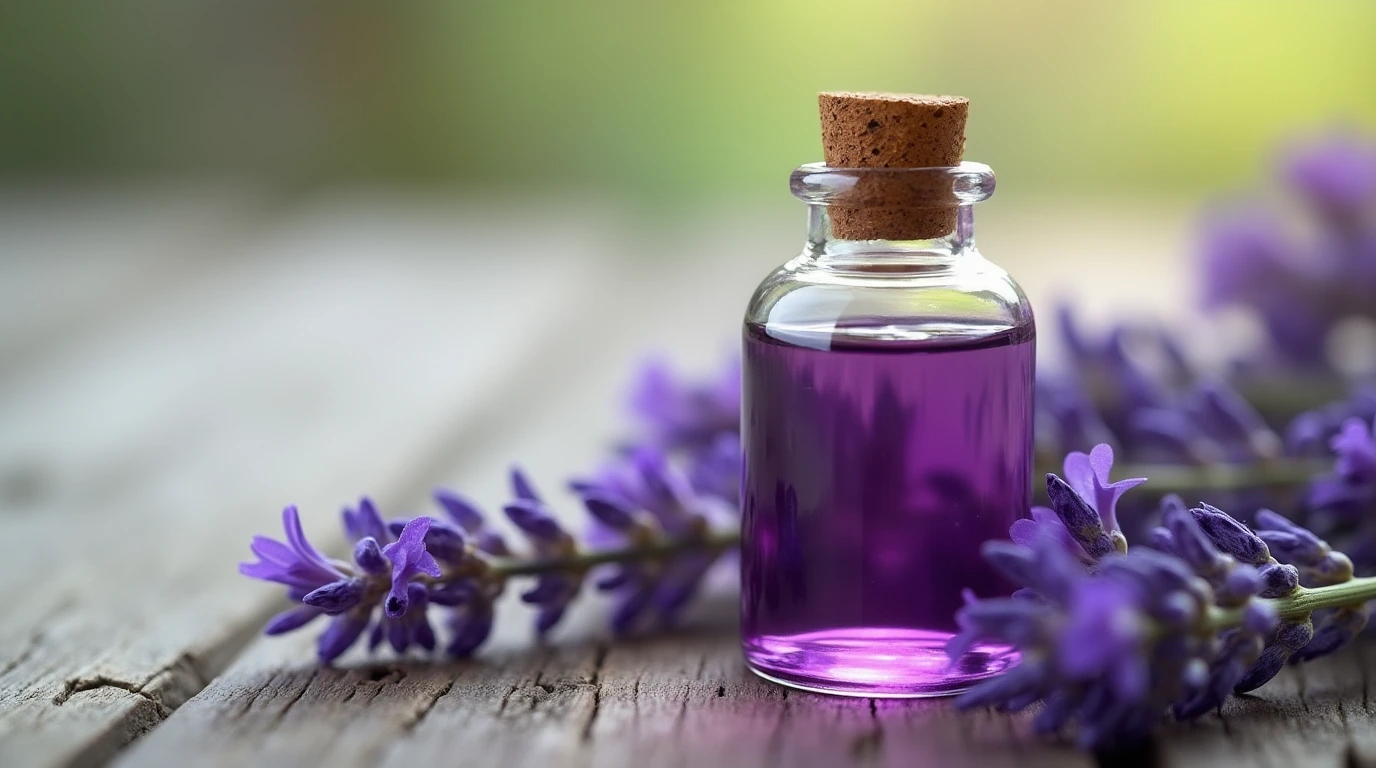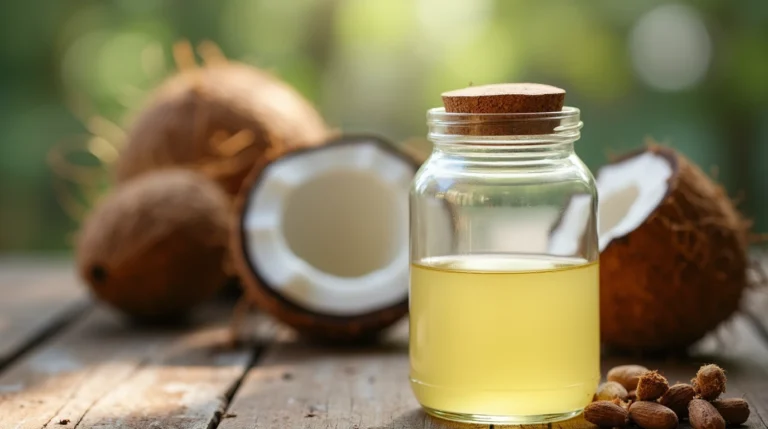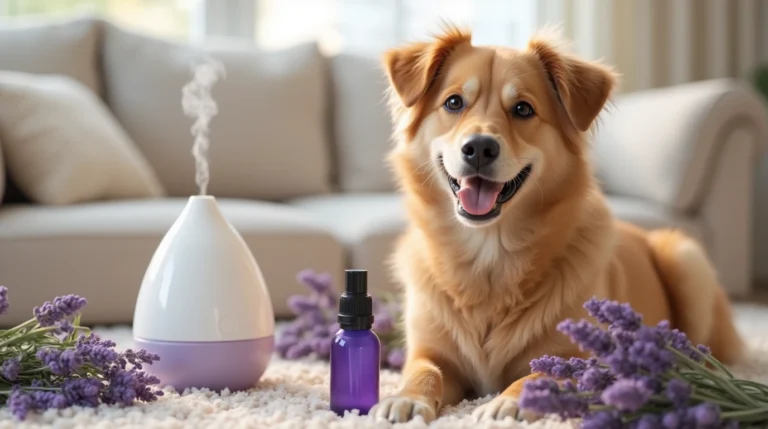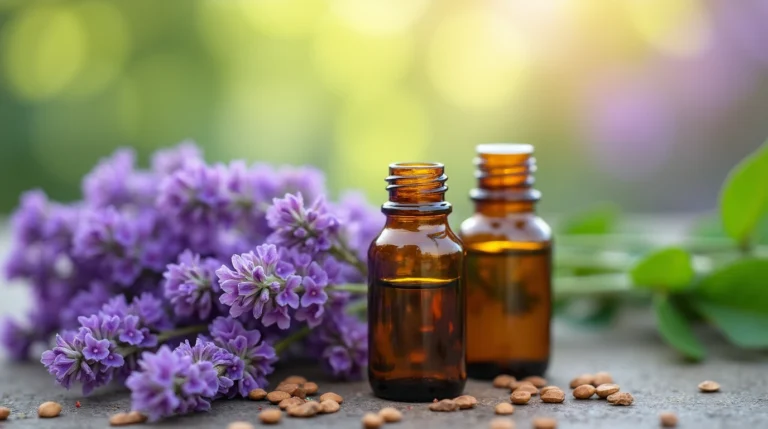Table of Contents
Have you ever wondered if lavender oil is safe for your cat? As a cat owner, it’s natural to want the best for your pet, especially when exploring natural remedies. Essential oils like lavender have gained popularity for their benefits in aromatherapy, but their effects on cats can be quite different.
While humans may enjoy the calming benefits of lavender, cats process essential oils differently. Understanding the risks and benefits is crucial to keeping your cat safe. In this article, we’ll explore how lavender oil affects your cat’s health, signs of toxicity, and key safety tips to ensure your pet’s well-being.
Whether you’re considering aromatherapy for your home or using essential oils around your cat, it’s important to know the facts. Your cat’s safety is the top priority, and being informed is the first step in protecting them. Let’s dive into what you need to know about lavender oilaaaaaaaaaaaaaaaaaaaaaaaaaaaaaaaaaa and your feline friend.
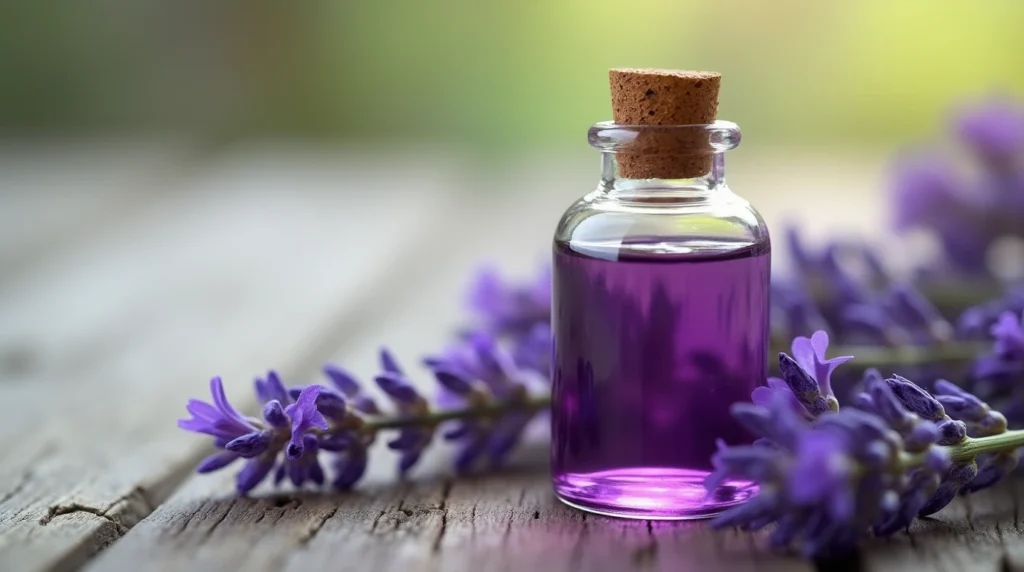
Key Takeaways
- Lavender oil can be toxic to cats due to compounds like linalool.
- Cats metabolize essential oils differently than humans.
- Signs of lavender toxicity in cats include vomiting and lethargy.
- Keep all essential oils out of your cat’s reach.
- Consult a vet before using any essential oils around your cat.
Understanding Lavender Oil and Its Properties
Lavender oil is a popular essential oil derived from the flowers of the lavender plant, primarily the Lavandula angustifolia species. This oil is known for its calming scent and is widely used in aromatherapy for humans. However, its effects on cats can be very different due to their unique metabolism.
What is Lavender Oil?
Lavender essential oil is extracted through steam distillation or pressing. It contains compounds like linalool, which contribute to its aroma and potential benefits. While it’s beneficial for humans, offering stress relief and improving sleep, cats process these compounds differently, which can lead to toxicity.
Types and Common Uses of Lavender Extracts
There are several types of lavender, with “true lavender” being the most common. Other varieties include spike lavender, each with different chemical compositions. Humans use lavender oil for skincare, relaxation, and even as a natural remedy for anxiety. However, when it comes to cats, it’s crucial to understand that their sensitivity to essential oils is much higher.
The extraction methods and forms of lavender oil vary, but not all are equally safe for use around pets. This understanding is key before considering any application near your cat.
is lavender oil safe for cats
Lavender oil is highly toxic to cats due to compounds like linalool and linalyl acetate, which they cannot process effectively.
Cats lack the liver enzymes needed to break down these compounds, making even small exposures dangerous and potentially leading to severe poisoning.
Key Points to Consider:
- Lavender oil is not safe for cats and can cause serious health issues.
- Exposure can occur through ingestion, inhalation, or skin contact, leading to symptoms like vomiting and lethargy.
- Always consult a veterinarian before using essential oils around your cat to ensure their safety.
- Be vigilant for signs of toxicity, such as drooling or tremors, and seek immediate veterinary help if you suspect exposure.
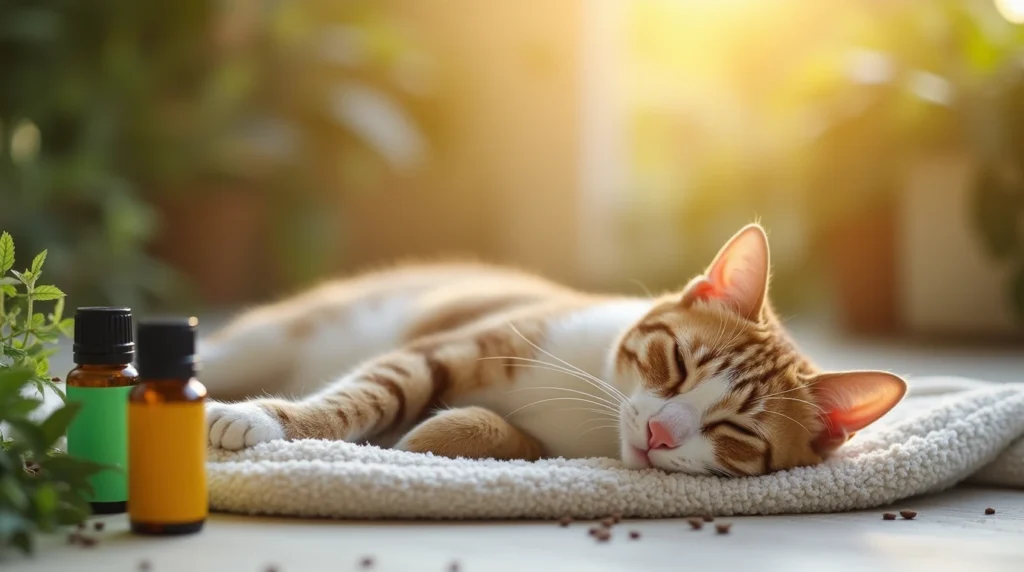
Understanding these risks is crucial for protecting your cat’s health and ensuring a safe environment for them.
Recognizing Signs of Toxicity in Cats
Identifying symptoms of essential oil toxicity in cats is crucial for their health and safety. Cats may exhibit a range of reactions when exposed to lavender oil, and it’s important to recognize these signs early to prevent severe complications.
Identifying Symptoms of Essential Oil Toxicity
If your cat is exposed to lavender oil, they may display symptoms that range from mild to severe. Common signs include drooling, vomiting, and lethargy. These symptoms can appear subtle at first but may worsen over time. In more severe cases, your cat might experience difficulty breathing or even liver failure, which can be life-threatening.
When to Contact Your Veterinarian
It’s essential to monitor your cat’s behavior closely after any potential exposure to lavender oil. If you notice any signs of toxicity, such as loss of appetite, tremors, or labored breathing, contact your vet immediately. These symptoms can quickly escalate into a medical emergency, requiring prompt treatment to ensure your cat’s health and well-being.
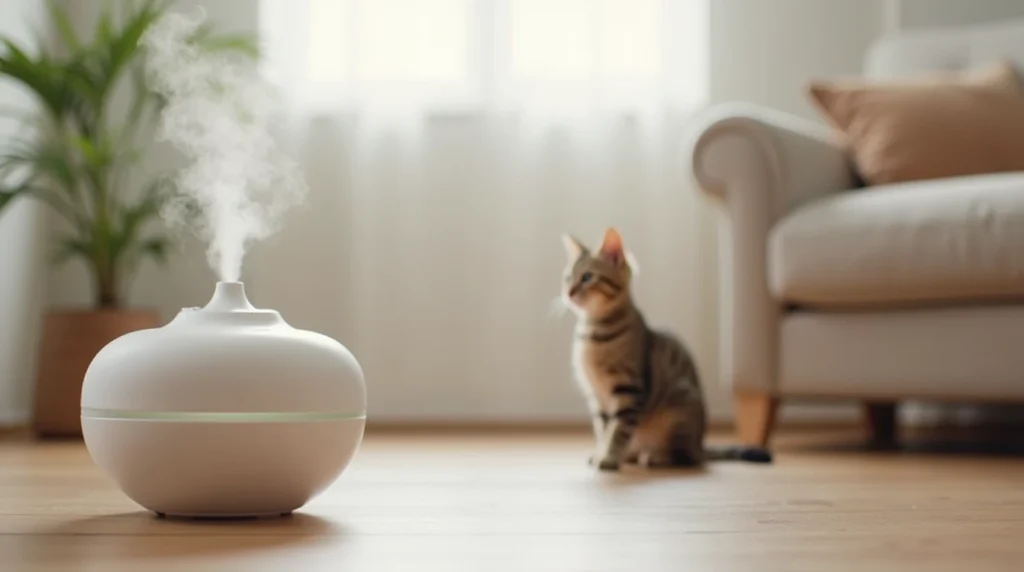
Even if symptoms seem mild at first, they can progress rapidly. Don’t wait—seek professional help immediately if you suspect your cat has been exposed to lavender oil. Your vet can provide the necessary treatment and ensure the best outcome for your pet.
How Cats React to Lavender Exposure
Exposure to lavender can cause noticeable changes in your cat’s behavior and physical health. These reactions vary from mild discomfort to severe toxicity, making it crucial to monitor your cat closely after any exposure.
Behavioral Changes and Physical Reactions
Cats often exhibit behavioral changes when exposed to lavender. These can include increased anxiety or stress due to the unfamiliar scent. Some cats may become more agitated or restless, while others might withdraw and hide.
Physical reactions can range from mild to severe. Common signs include gastrointestinal upset, such as vomiting or diarrhea, and skin irritation at the point of contact. In some cases, cats may experience more severe symptoms like lethargy or difficulty breathing.
Even indirect exposure, such as through diffusers or residual oil on surfaces, can affect your cat. If your cat sniffs or grooms areas where lavender oil is present, it may worsen their condition. This underscores the importance of keeping essential oils away from your cat’s environment.
Observing your cat for any unusual behavior after exposure is vital. Signs such as drooling, tremors, or lethargy indicate potential toxicity and require immediate veterinary attention. Early recognition of these symptoms can prevent more serious health complications.
| Exposure Type | Behavioral Changes | Physical Reactions |
|---|---|---|
| Direct Exposure | Anxiety, restlessness, hiding | Vomiting, skin irritation, lethargy |
| Indirect Exposure | Agitation, withdrawal | Gastrointestinal upset, difficulty breathing |
Understanding these reactions is key to safeguarding your cat’s health. Recognizing the signs early and taking prompt action can help prevent serious harm. This knowledge also sets the stage for discussing safe practices with diffusers and diluted oils in the following sections.
Safe Use of Diffusers and Diluted Essential Oils Around Your Pet
Creating a calming environment at home can be challenging when considering your pet’s safety. Essential oil diffusers are popular for aromatherapy, but their use around pets requires careful consideration.
Guidelines for Proper Diffusing Techniques
Position your diffuser in areas where your pet cannot access it directly. Limit operation to short intervals, such as 10 minutes at a time, to prevent overexposure. Ensure good ventilation by keeping windows slightly open to dissipate the mist effectively.
Best Practices for Diluting Lavender Oil
Always dilute lavender oil with a carrier oil before use. Start with a small amount, about 1-2% concentration, to minimize risks. Even when diluted, exercise extreme caution, as pets are highly sensitive to essential oils.
Keep diffusers away from your cat’s food and resting areas to avoid accidental exposure. Always read product instructions and consult your veterinarian before introducing any new products into your home environment. Remember, safety practices are key to reducing potential health risks for your pet.
Exploring Pet-Safe Aromatherapy Alternatives
Creating a calming environment for your pet doesn’t have to involve risky essential oils. There are plenty of safe, effective alternatives to traditional aromatherapy that can promote relaxation without endangering your cat’s health.
Non-Toxic Options for a Calming Environment
One of the most popular alternatives is the use of pheromone diffusers. These devices mimic natural feline pheromones, helping to reduce stress and anxiety in cats. They are specifically designed with cat health in mind and can be a great benefit for pets that experience separation anxiety or environmental stress.
Another option is calming collars. These products often use pheromone technology or gentle pressure to provide comfort. They are easy to use and can be worn by your cat during stressful situations, making them a practical solution for maintaining a stress-free home environment.
| Product | Benefits | How It Works |
|---|---|---|
| Pheromone Diffusers | Reduces anxiety and stress | Mimics natural feline pheromones |
| Calming Collars | Provides comfort and reassurance | Uses pheromone technology or gentle pressure |
| Natural Supplements | Safe and effective stress relief | Contains non-toxic, natural ingredients |
For those looking for non-chemical solutions, air purifiers and odor-eliminating sprays are excellent choices. These products maintain a fresh scent in your home without exposing your pet to harmful substances. Always consult your veterinarian before introducing new products to ensure they align with your cat’s specific needs.
By choosing these pet-safe alternatives, you can create a calming and healthy environment for your cat without the risks associated with essential oils. Your home can be both serene and safe, ensuring your pet’s well-being always comes first.
Conclusion
While lavender oil offers many benefits for humans, its toxicity in cats is significant and cannot be overlooked. This essential oil contains compounds like linalool, which cats cannot metabolize effectively due to their unique liver function. As a result, even small exposures can lead to severe health issues.
Key signs of toxicity include vomiting, lethargy, and difficulty breathing. If you suspect your cat has been exposed to lavender oil, immediate veterinary care is crucial. Consulting a vet before using any essential oils around your cat is always the best course of action to ensure their safety.
For a calming environment, consider pet-safe alternatives like pheromone diffusers or calming collars. These options provide stress relief without the risks associated with essential oils. Always prioritize your cat’s health and well-being by choosing safe, non-toxic products.
Remember, your cat’s safety should always come first. Keep essential oils out of reach and explore safer alternatives to maintain a peaceful home environment for both you and your pet.
FAQ
Is lavender essential oil toxic to cats?
Yes, lavender essential oil can be toxic to cats. While it may have benefits for humans, cats metabolize it differently, and exposure can lead to symptoms like vomiting, breathing issues, or liver damage. Always consult your veterinarian before using any essential oils around your pet.
What are the signs of essential oil poisoning in cats?
Signs of poisoning include vomiting, drooling, trembling, or difficulty breathing. If you notice these symptoms, contact your veterinarian immediately. Early treatment is crucial for your cat’s health.
Can I use a diffuser with lavender oil around my cat?
It’s best to avoid using diffusers with lavender oil near cats. Even small amounts can cause toxicity. If you use a diffuser, ensure your cat can leave the area and keep the oil concentration very low.
Are there any benefits of lavender oil for cats?
While lavender oil is often used for stress relief in humans, it doesn’t provide the same benefits for cats. In fact, it can cause more harm than good. Stick to cat-specific calming products recommended by your vet.
How should I dilute lavender oil for use around cats?
If you must use lavender oil, dilute it heavily with a carrier oil and use it in small amounts. However, it’s safer to avoid it altogether. Always prioritize your cat’s safety and health.
What are some cat-safe alternatives to lavender oil?
Cat-safe alternatives include pheromone diffusers like Feliway or natural calming aids like catnip. These options are specifically designed for your cat’s well-being and are much safer.
What should I do if my cat ingests lavender oil?
If your cat ingests lavender oil, contact your veterinarian or a pet poison hotline immediately. Provide as much information as possible about the product and the amount exposed to ensure proper treatment.

